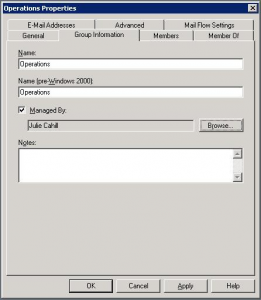Exchange 2007 NLB CAS Prerequisites for Windows Server 2008
In an article I wrote earlier this year (“Installing the Exchange 2007 prerequisites on Windows Server 2008“) at Daniel Petri’s site, I showed how to use the XML files created by the product group to quickly and painlessly install the Exchange Server 2007 prerequisites on Windows Server 2008. For the most part, those work fine. But, if you’re installing multiple CAS servers, and going to load balance them using Windows Network Load Balancing (NLB) feature, you still need to manually install the NLB feature.
This can be done by either opening Server Manager, going to Features, and installing the NLB feature, or opening a command prompt and typing
ServerManagerCmd -i NLB
Since the whole idea behind the XML files was to automate the process, this wasn’t the cleanest way of doing it. Also, one of the best ways to test Hub Transport functionality is via telnet, which isn’t installed by default in Windows Server 2008. Telnet can also be manually installed via Server Manager or
ServerManagerCmd -i telnet-client
A common implementation practice is to install the Hub Transport and Client Access roles together, and then load balance CAS, as well as some hub traffic. That being the case, why not streamline the prerequiste process to include NLB and telnet? Now you can.
Open Exchange-CAS.xml, and scroll to the bottom. Right under
<Feature Id="RPC-OVER-HTTP-proxy" />
paste the following:
<!-- Install Network Load Balancing and telnet client as mentioned at https://www.ucunleashed.com/111 --> <Feature Id="NLB" /> <Feature Id="Telnet-Client" />
Save the file as Exchange-NLBCAS.xml. Just like the others, you can call the file via servermanagercmd.exe using
ServerManagerCmd -ip Exchange-NLBCAS.xml
to install the prerequisites. Check the original article mentioned above for more info on how to use the XML files.
Enjoy!










Follow Me